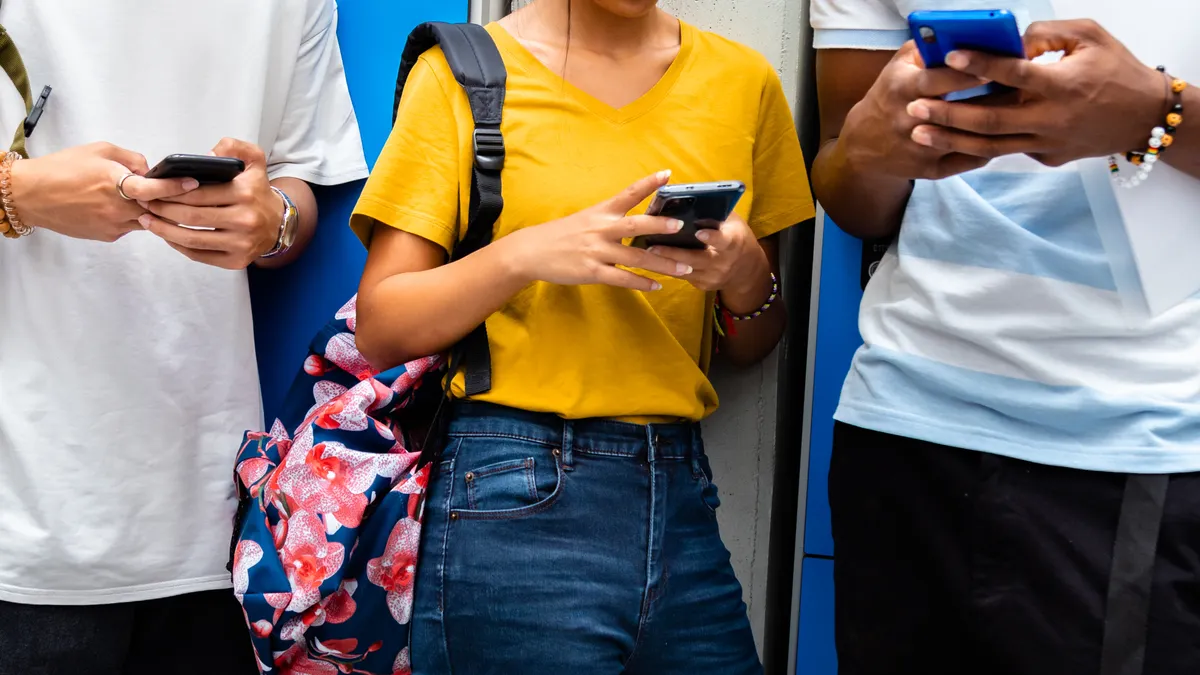House lawmakers found bipartisan agreement on screentime in schools — namely that unregulated classroom cellphone use can harm students' achievement and mental health — during a Tuesday House subcommittee hearing.
Burgeoning policies banning student cellphone use during the school day have led to lower student discipline rates, higher teacher retention and more effective instructional time, district and state education leaders as well as researchers told the House Subcommittee on Early Childhood, Elementary, and Secondary Education.
At Richardson Independent School District in Texas, student suspensions dropped between 15% and 54% this year for campuses that implemented cellphone bans, said Matthew Gibbins, the district’s assistant superintendent. Additionally, he said, one school reached a teacher retention rate high of 94%, with educators highlighting the phone-free environment as a reason for staying in the profession.
“Perhaps most importantly, teachers across all campuses reported regaining more than 10 minutes of instruction per class period,” Gibbins said. “That’s over an hour per week per class that is now focused on student learning and connection.”
According to the subcommittee’s chair, Rep. Kevin Kiley, R-Calif., screentime during school hours not only affects students, but also “contributes heavily to teacher stress and burnout” from having to compete with cellphones for students’ attention.
“Teachers and parents believe this is a community problem that can be solved by having a culture that balances the use of technology in the classroom with proven methods of instruction that encourage active student engagement, good mental health, good relationships and quality instruction,” Kiley said in his opening statement.
Mental health challenges versus grant cuts
Jean Twenge, a psychology professor at San Diego State University, told the panel that smartphone use reduces both attention span and cognitive performance. Students also have less face-to-face interaction with their peers and instead opt to use their phones during breaks and lunch periods, she added.
All of this is occurring “at the same time that we’ve had major increases in depression, self harm and suicide among our teens,” Twenge said.
Overall, the subcommittee members agreed that cellphones in the classroom come with a lot of setbacks for students.
Some Democrats, however, contended that Republicans were being disingenuous about their concerns over student mental health, pointing to the recent sudden cancellation of $1 billion in federal grants for school mental health resources under the Bipartisan Safer Communities Act.
“What my concern is, is that Republicans are just giving lip service to mental health right now, because the administration is ending grants … that over 250 school districts relied on to hire school counselors and social workers,” said Rep. Summer Lee, D-Pa. “Republicans are asking schools to address students’ mental health while leaving them with very little support to actually do anything about it.”
The subcommittee’s ranking member, Rep. Suzanne Bonamici, D-Ore., called for Congress to focus on restoring the grants. Bonamici added that Congress must also work to protect the Education Department — including its ability to conduct and fund research on the impact of screentime policies in schools.
But Tim Walberg, R-Mich, chair of the House Education and Workforce Committee, said research isn’t necessary to understand the issue of cellphones in schools — because “we’ve seen it already.”
“I agree that we should not have the federal government stepping in, but we ought to encourage states and especially local districts and especially parents to step up to the plate and say, ‘enough,’” Walberg said.
The federal government’s role?
Indeed, in another show of bipartisan consensus, subcommittee members agreed with Walberg that policies limiting screentime should not be mandated at the federal level.
Almost half of states have implemented their own policies on the issue, with Virginia recently becoming the 21st to ban or limit cellphones in schools.
Beyond the impact of screentime on students, there are other more crucial education issues to be addressed at the federal level, Bonamici said. She specifically cited cuts to the Education Department’s Office of Educational Technology and the Institute of Education Sciences, which consequently removed “vital resources for schools that are striving to integrate technology efficiently and equitably.”
“This is important, but we can’t pretend that everything is normal when the recent threats by the Trump administration and this proposed, what I call the ‘big, bad, ugly bill,’ presents significant threats to the well-being of students and the integrity of our public education system,” Bonamici said.



















